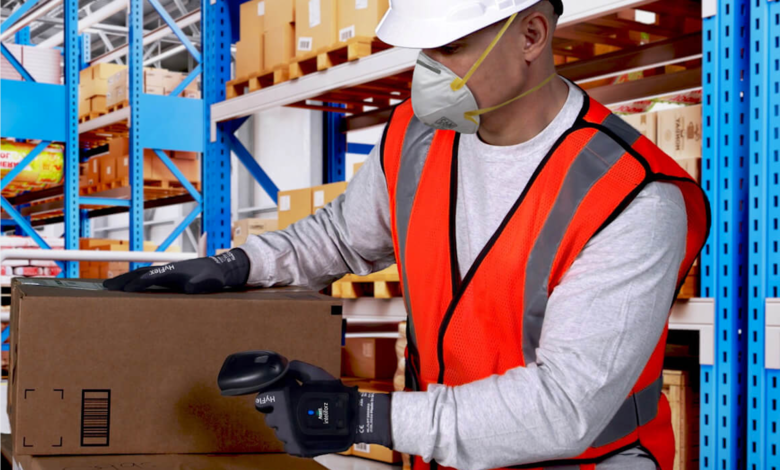
People tend to think of workplace safety as a linear progression stretching from the dingy, dangerous assembly lines of the Industrial Revolution to the sleek, technology-enabled floors of Industry 4.0.
But improvements in manufacturing efficiency and production don’t inherently correspond to improvements in safety. New technology and consumer demands bring new risks to the frontline worker.
As the automotive industry becomes electrified and moves away from the internal combustion engine, for example, new systems and wearable protection are needed to safeguard workers from electrical shock. Meanwhile, the E-commerce boom and resulting strain on warehouse and logistics workers has been linked to higher levels of injury as businesses rush to meet demand. And as workplaces increasingly rely on automation and robotics, the relationship between worker and machine changes, requiring new safeguards.
Investments in manufacturing technology demand corresponding investments in safety technology. Fortunately, new applications of artificial intelligence and automation are enabling businesses to take a predictive and proactive approach to protecting their workforce.
Getting Proactive with Machine Learning
Workplace safety has historically been a lagging indicator process. Injuries were measured after they occurred; mishaps counted after the event.
The combination of wearable safety technology and AI is changing that. Detailed data capture and predictive modeling allows businesses to identify and prevent safety risks before they occur.
Consider musculoskeletal disorders (MSDs), which are the single largest category of workplace injuries and account for nearly a third of all worker compensation costs in the US. Wearable technology like connected gloves can measure the hand and wrist movements of workers, then feed this information to AI-enabled software. From there, machine learning identifies specific movements associated with increased risks that could lead to MSDs.
Equipped with this information, an employer can schedule training sessions for affected employees, upgrade their PPE, or optimize machinery and workflows that may be contributing to the problem. In short, the business can step in to prevent risky movements before they occur.
Systems like this can drive measurable change in unsafe employee behavior within four to six weeks of deployment. That’s in comparison to traditional ergonomic behavioral training that can take six to eight months to show results.
What’s more, by continually measuring and analyzing risky movement, an AI-enabled system can provide real-time feedback on the results of a businesses’ preventative measures. Employers can generate detailed reports on whether a training session or new protective equipment actually decreased risky movements and by how much, allowing for continual evaluation and optimization.
Empowering Employees to Protect Themselves
Getting proactive also means empowering employees to take their safety into their own hands. For years, the identification of workplace hazards has fallen exclusively on health and safety teams, who rely on sluggish paper-based systems to record and address hazards.
But modern workplaces enable frontline workers with the technology needed to quickly identify and communicate risks. Using handheld connected devices, workers can quickly record hazards—spills, damaged machinery, lapsed protocol—from the floor. This gives safety teams real-time visibility of the entire operation and, because it’s digitized, removes logistical hurdles that have traditionally created delays that put workers at risk.
That digitization doesn’t just decrease reaction times. When paired with machine learning, this becomes another point at which businesses can predict and prevent problems before they occur. How are different departments adopting the technology? Are you seeing higher levels of hazard identification? Are you seeing more engagement for a particular solution? How does that compare to prior execution? All of these questions can be answered.
Ultimately, this technology goes beyond measuring efficiency and ROI. By investing in tools that enable workers to take an active role in the safety of themselves and their colleagues, employers show they care about the people in their workforce. That commitment can go a long way toward building strong relationships that keep workers happy and loyal.
Looking Toward the Future
As industrial workplaces continue to evolve, so will the ways in which we keep workers safe. The coming years will bring exciting advancements in workplace safety.
Data collection will take a step forward. Improved wearables and smart fabrics will measure key biometrics in addition to motion, while new optics tools may eliminate wearables altogether. Machine learning models will get smarter, enabling businesses to glean new insights and be more proactive than ever.
Critically, we’ll see an improvement in how these technologies work together. There’s been a rush to solve a lot of disparate safety problems and this led to a fractured ecosystem of solutions. Over time, these technologies will be consolidated into integrated solutions. Imagine having PPE asset management, musculoskeletal prevention, chemical and gas detection, and workplace monitoring housed within a single machine learning platform.
Keeping up with these innovations will be key to any manufacturer looking to stay ahead of the competition. By investing in workplace safety, businesses will prove critical to a productive and happy workforce.



